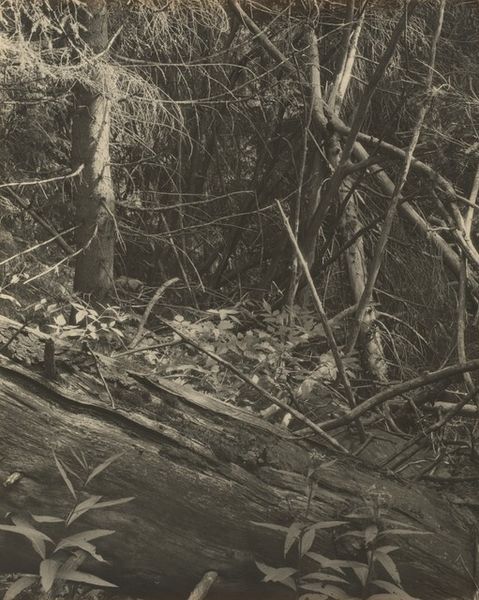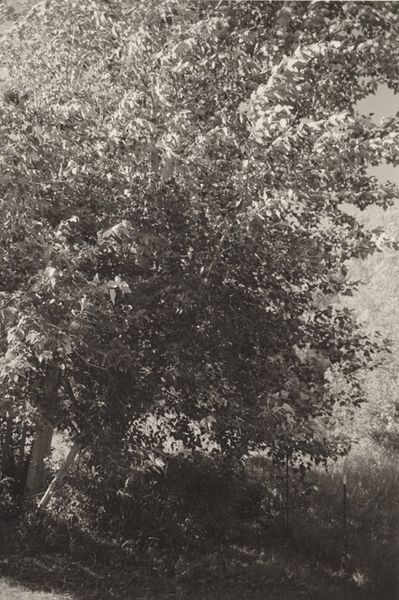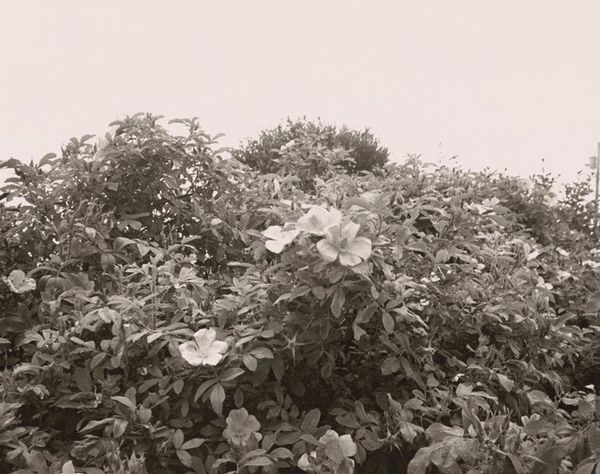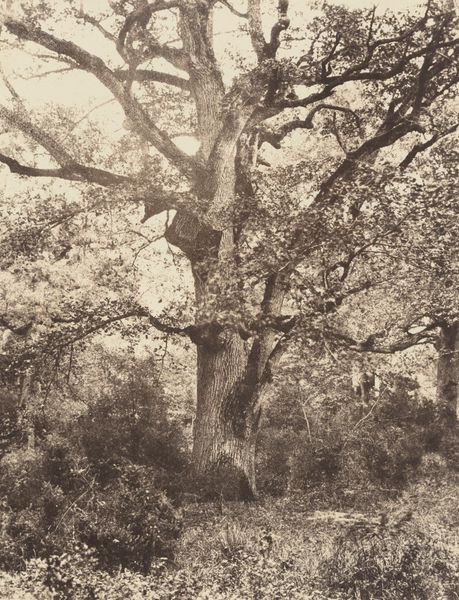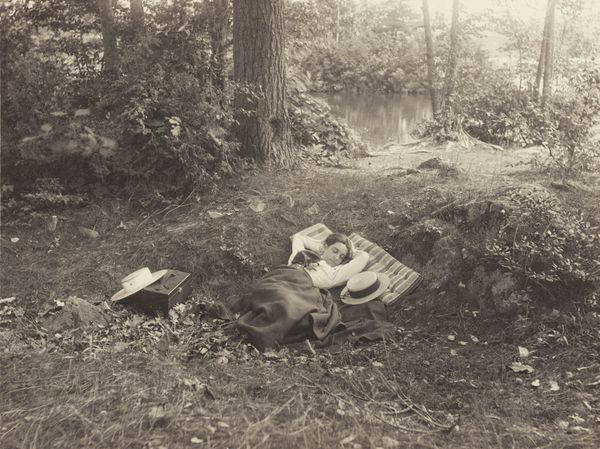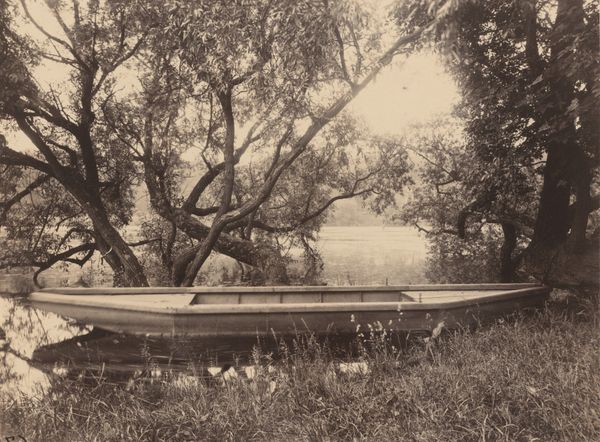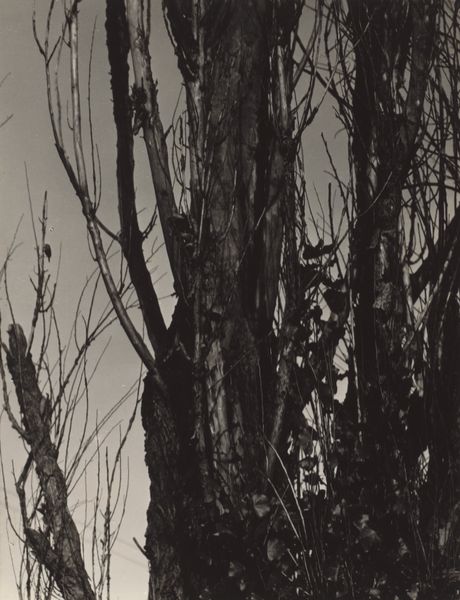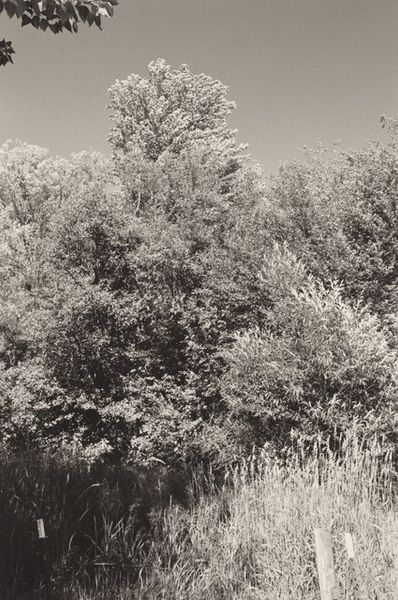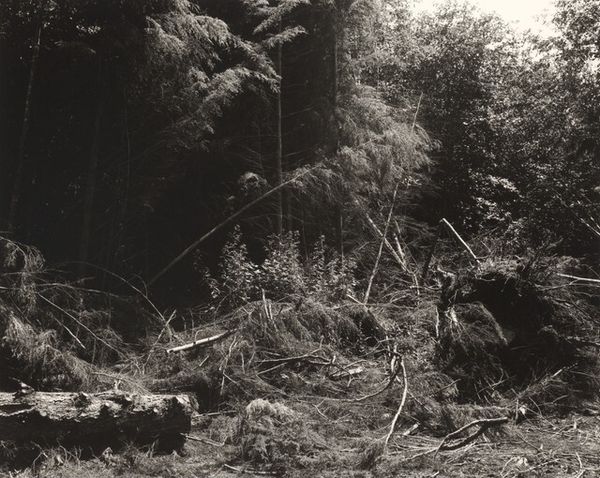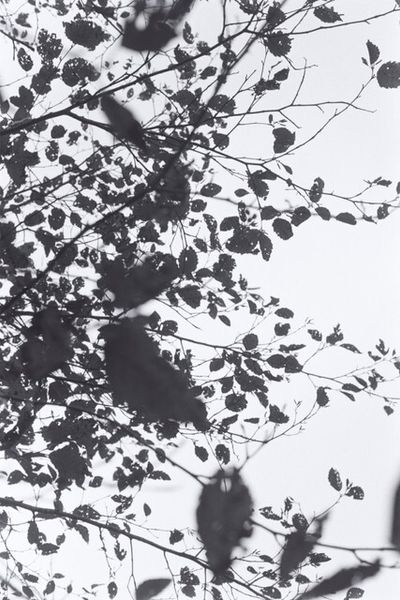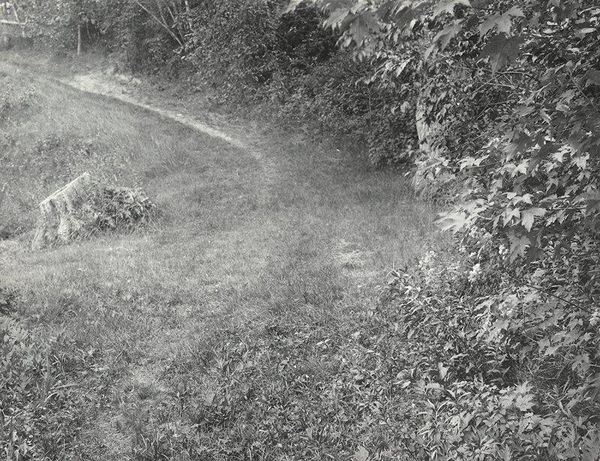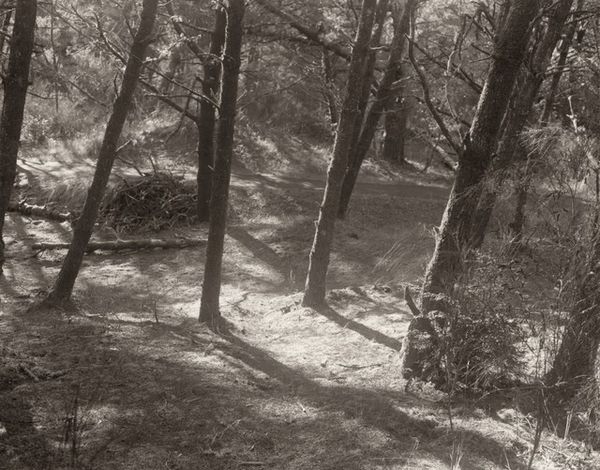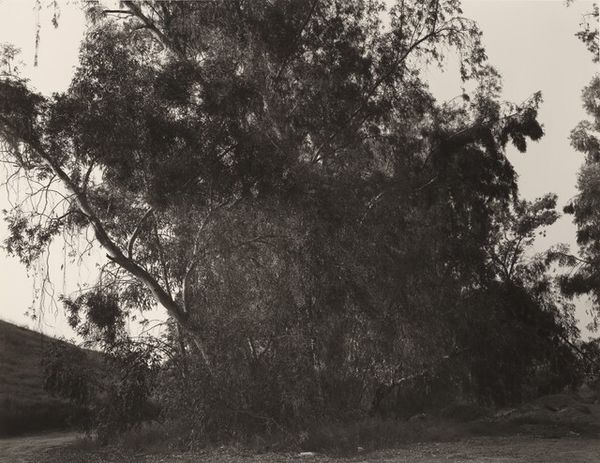
Dimensions: image/sheet: 19.9 × 25.7 cm (7 13/16 × 10 1/8 in.) mount: 35.1 × 41.3 cm (13 13/16 × 16 1/4 in.)
Copyright: National Gallery of Art: CC0 1.0
Curator: Eugène Cuvelier's photograph, "A Rock in the Forest," taken around 1865, invites us into a tranquil woodland scene. It’s quite a contrast from his architectural studies. Editor: Immediately, I feel this intense stillness, like the forest is holding its breath. It’s overwhelmingly green, almost monochromatic, with this solitary rock jutting out, like a silent observer. It whispers ancient tales. Curator: Cuvelier was part of a wave of artists taking cameras outdoors, embracing the direct encounter with nature. These early photographers grappled with how to translate three-dimensional space and light into a flat image, thinking through issues of surface and depth. He employs a gelatin silver process, where the chemical reactions with light allowed him to capture incredibly minute details. Editor: Details that make it, for me. Look at how he captured the different textures. There's the rough face of the rock itself. But I’m also wondering: What does the act of selecting and framing that rock meant to him? Does it function as some quiet, romantic ideal? Curator: Considering the period, this could be read as a statement about man's relationship with the environment during the burgeoning Industrial Revolution. To produce this single image, Cuvelier had to mobilize significant resources: darkroom equipment, knowledge of chemistry, and access to this untouched landscape. Editor: So much about the rock, and so little about me! What it does is make me ask some questions. Did he spend hours just wandering around until that precise moment occurred when everything felt true and whole, when it clicked. I’d bet yes. Curator: It presents us with questions regarding photographic truth, intention, and the means of production. In short, the question of why we might find artistic value in an image such as this, produced during such turbulent transformations, becomes the crux. Editor: Absolutely. And on top of all the labor and chemical ingenuity, what emerges feels profoundly personal. Thanks to you and Monsieur Cuvelier. Curator: And to you as well. It brings an alternative lens to reflect back to all this creative history.
Comments
No comments
Be the first to comment and join the conversation on the ultimate creative platform.
